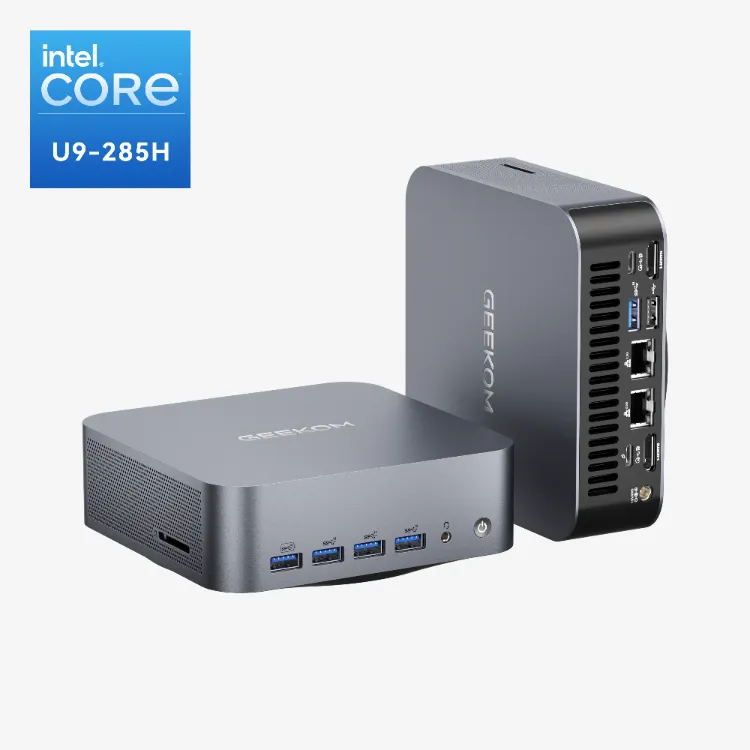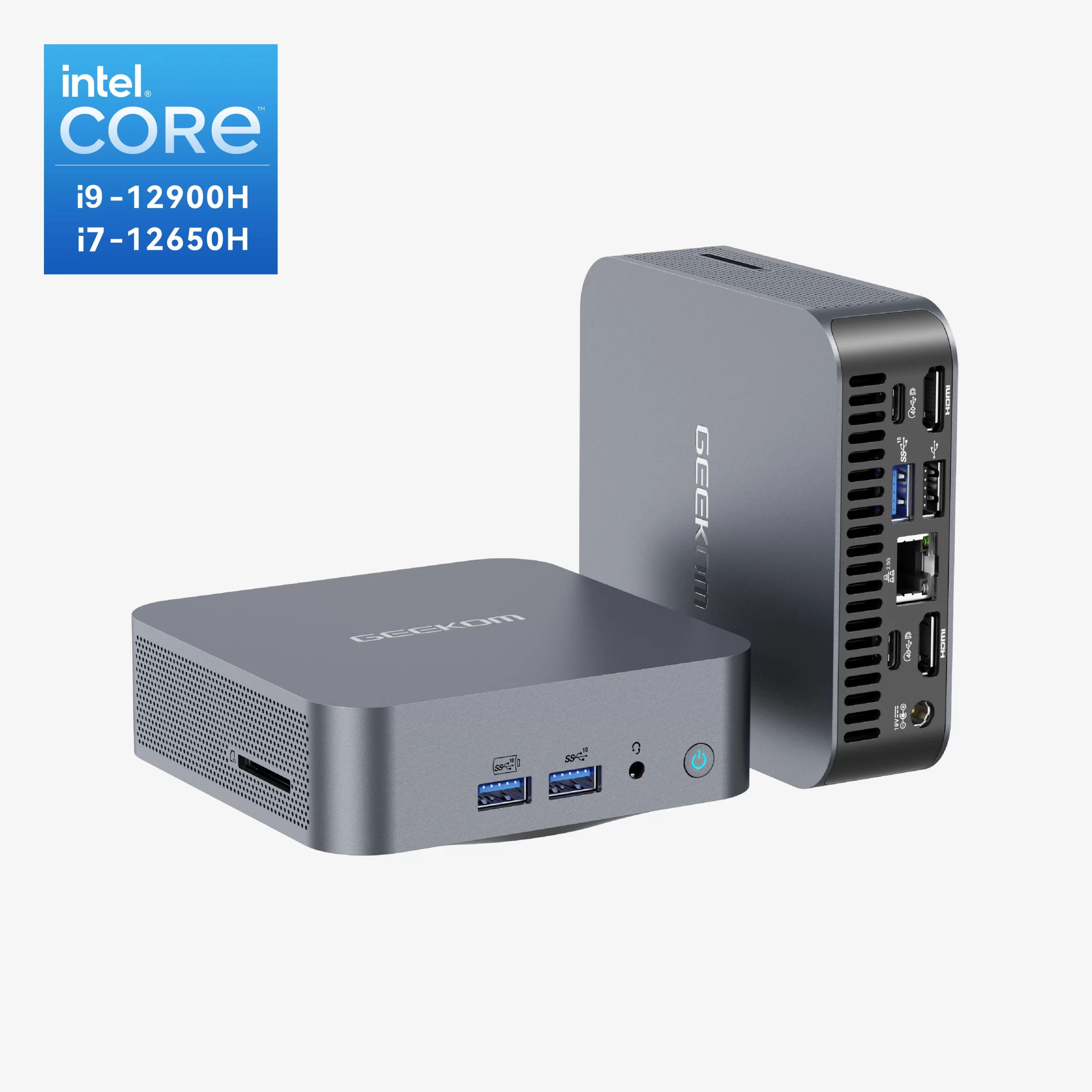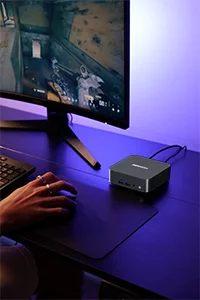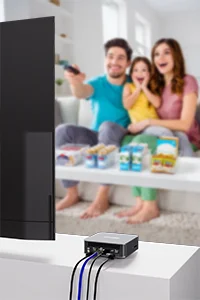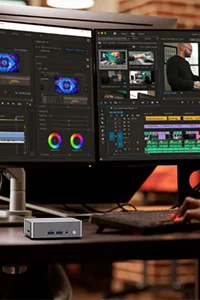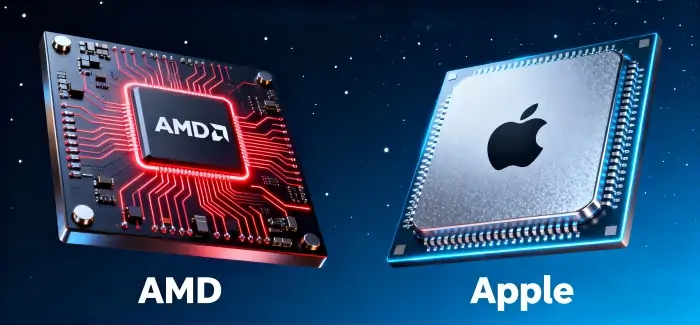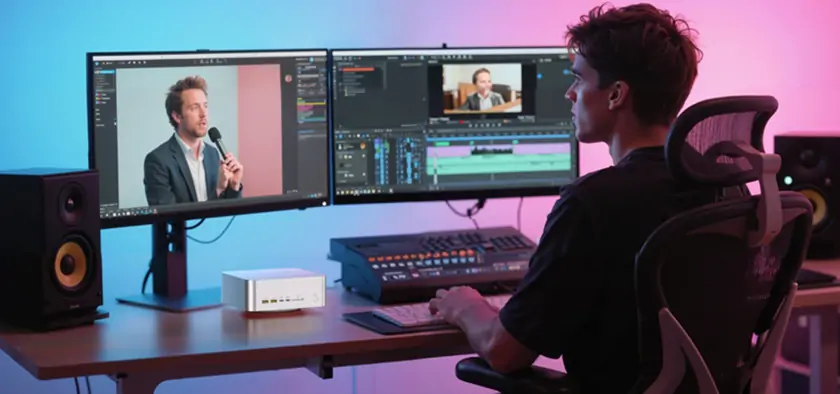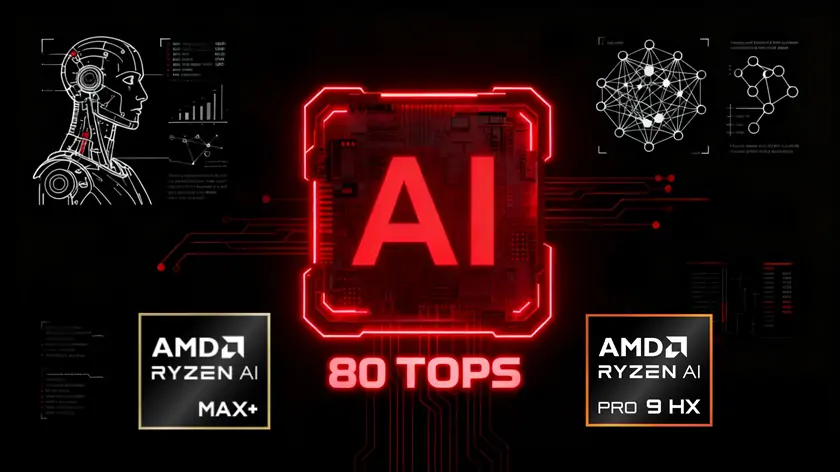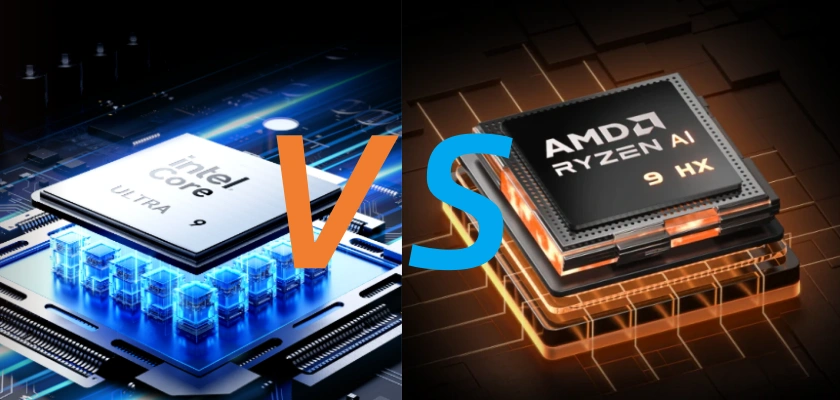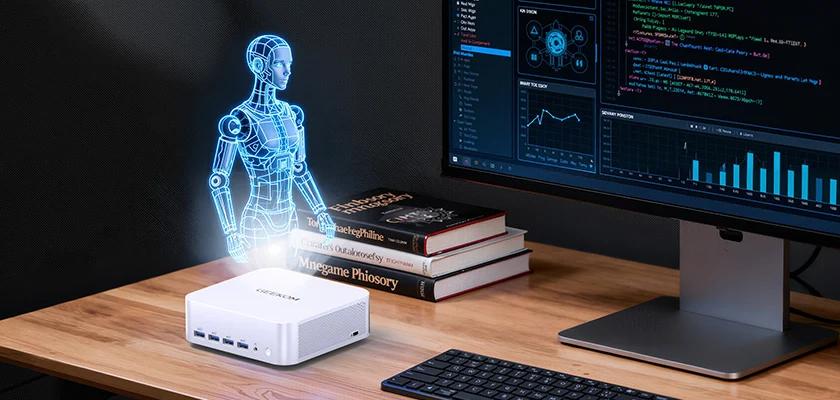We are no longer limited to using AI in the cloud. Powerful AI tasks can now be done on your computer, from creating text and images to running complicated data models. The processor you choose is now more important than ever because of this change. For many years, most PC users have used Intel. But with the rise of on-device AI, you may be wondering if there are better options for your AI-focused workloads.
This post will look at the current state of AI processors. We will discuss how Intel is changing, how new competitors are doing, and what you should think about to make sure your computer is ready for the future of AI.
How Intel Handles AI Tasks Today
There has been no rest for Intel. Intel added its own Neural Processing Unit (NPU) to its new Core Ultra processors, such as those in the “Meteor Lake” series. Specifically designed to speed up AI tasks, an NPU is a part of the chip that makes them run faster and more efficiently than on a regular CPU alone.
In some tests, the change is very noticeable. For example, PCMag’s first tests of the Core Ultra 7 155H showed that it could handle AI processing “much better” than older Intel chips that could only use the main processor and graphics. This means that tasks like image upscaling or object recognition that use AI will run faster.
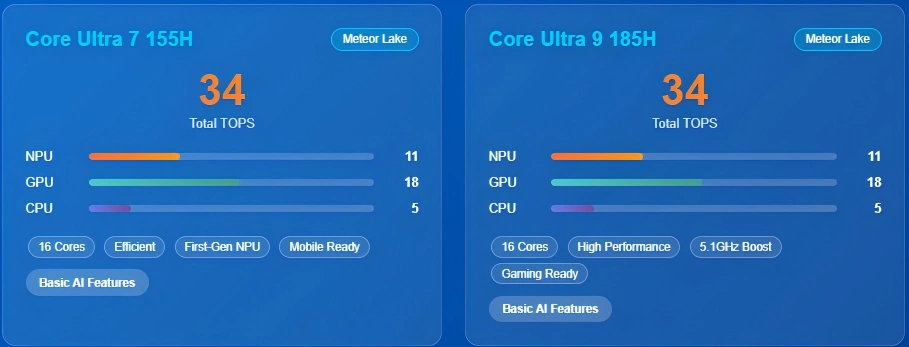
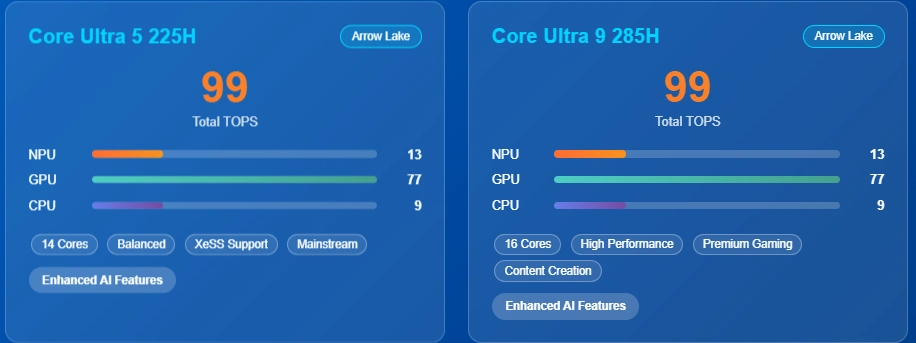
But Intel does not really win in every way. AI is a broad field, and not all tasks are the same. When used in the real world, things get a little more complicated. Even though Intel’s NPU is a good move, it faces significant competition, particularly in areas such as power efficiency and AI acceleration speed.
The Rise of AMD Ryzen AI and Its RDNA 3.5 Advantage
AMD, which has been Intel’s rival for a long time, has made a big move into AI with its Ryzen AI processors. For AI tasks, these chips are especially strong because they combine an NPU with their powerful RDNA 3.5 graphics architecture.
What does this mean for you? If you compare two things head-to-head, the results might surprise you. Tom’s Hardware tested things with OpenVINO, Intel’s own AI software toolkit. Even though Intel had the advantage of being at home, AMD’s Ryzen chips often won. For instance, the AMD processor was faster at tasks like typing up audio and blocking out noise. This means that AMD might be better for some kinds of AI work, especially ones that can utilise the graphics part of the chip.
Tonnes of Operations Per Second, or TOPS, is often what makes the difference. This shows how powerful an AI processor is. Intel’s first-generation Core Ultra NPUs have between 11 and 13 TOPS, but AMD’s newest Ryzen AI 9 HX 370 has 50 TOPS, which is a lot more. TOPS is not the only thing that matters, but it is a good sign of how well a chip can handle difficult AI tasks.
| Feature | Intel Core Ultra (Series 1) | AMD Ryzen AI 9 HX 370 |
|---|---|---|
| NPU TOPS | ~11-13 | 50 |
| Architecture | Integrated NPU | NPU + RDNA 3.5 Graphics |
| Strengths | Good performance boost over non-NPU chips | High raw AI performance, excels in specific real-world tasks |
Further Reading: AMD Ryzen AI 9 HX 370 vs Intel Core Ultra: The Battle for AI Mini PC Supremacy
Apple Silicon and the Efficiency Frontier
When you talk about modern processors, you cannot leave out Apple. Apple did something different with its M-series chips by creating a “unified memory” architecture. This means that the CPU, GPU, and Apple’s Neural Engine (NPU) all share the same memory pool. This can make it very fast and easy to move large amounts of data for AI tasks.
For example, the latest M4 chip has a Neural Engine that can do an amazing 38 trillion operations per second. It is clear that Apple wants to focus on AI performance, as PCMag points out. There is no denying the appeal for developers and creative professionals who use a MacBook or Mac Mini to do simple AI tasks. Because Apple Silicon is so efficient, you get great performance without draining your battery.
But there is a cost to this power. The Apple ecosystem is like a walled garden. It is only possible to use Apple hardware. You cannot upgrade parts or choose from a large selection of devices like you can with PCs. For people who like having a lot of options and flexibility, this can be a big problem.
GPUs and NPUs: When Specialised Hardware Wins
We have been talking about the AI accelerators built into the main processor so far. But for AI tasks that are very hard, you will need even more specialised hardware. This is where Graphics Processing Units (GPUs) come in handy.
It turns out that companies like NVIDIA and AMD have been making powerful GPUs for games for a long time. These chips are also great at doing the parallel maths that AI model training and other heavy-duty AI workloads need. A high-end GPU is still the best choice if you are a researcher, a data scientist, or an AI enthusiast who wants to train their own models.
But what about the NPU? Here’s how to look at it:
- An NPU is like an AI personal assistant that works very well. Everyday AI tasks, like blurring your background in a video call or typing up a meeting, should be easy for it to do. It is always on and ready to help, and it will not slow down your other programmes.
- A GPU is really powerful for AI. Built for raw power, it can do huge, complicated calculations. This is what you need to do the heavy lifting, but it takes a lot more energy.
A system that has both is the best, and one that we are seeing more and more of. So, your computer can use the right tool for the job: the NPU for small tasks that happen over and over, and the GPU for big tasks that require a lot of work.
Best Mini PCs and Systems for AI Workloads (2025)
It might feel a little vague to talk about processors and hardware all the time. You might be thinking, “That is great, but I do not want to set up my own PC. What options do I have if I want an AI-ready system that is ready to go?”
AI-ready mini PCs come into play here. These small computers are designed to have a surprising amount of power for how small they are, and many of them now come with the newest AI-accelerated processors. With all the AI hardware you need already built in, these machines are great because they are ready to use as soon as you get them.
Let us look at the GEEKOM A9 Max. The AMD Ryzen AI 9 HX 370 processor in this mini PC gives it the great 50 TOPS of AI performance we discussed earlier. It has a small footprint, but it can handle heavy AI tasks like creating local images, transcribing videos, and even simple machine learning tasks. It works as well as a desktop computer but takes up less room than a coffee table book.
If you prefer Intel’s ecosystem, the GEEKOM IT15 is a great alternative. With Intel’s Core Ultra processors it has the company’s NPU technology and mature software and driver support. Customers who depend on certain Intel-optimised apps or just like the comfort of Intel’s platform will find this a great way to start using AI-accelerated computing.
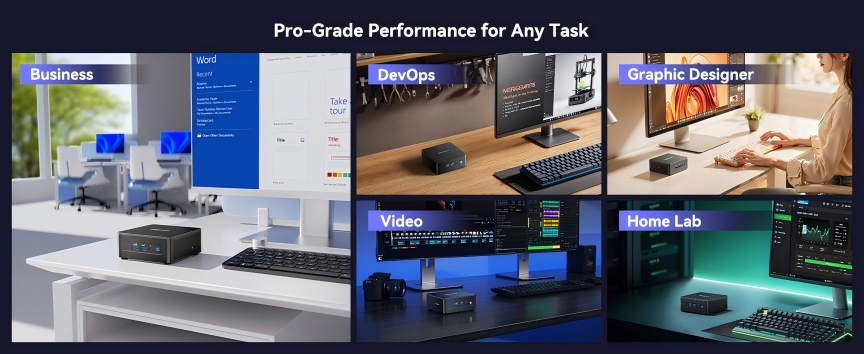
The best thing about these mini PCs is that they are both portable and fast for AI. Size does not mean you have to give up performance. You can put these systems on your desk, behind a monitor, or even take them with you when you travel. Because they use a lot less power than a regular desktop tower, you will pay less for electricity and have to deal with less heat. Still, they work well when you need to run an AI model or process a bunch of images.
These mini PCs are perfect for people who create content using AI-enhanced photo and video editing, developers who test machine learning models, or professionals who need reliable AI tools for transcription and analysis. You can do real work with them, but they are small and efficient enough to fit in any workspace.
Check out mini PCs that are optimised for AI and designed for next-generation workloads to see how they can help you be more productive without taking up too much space on your desk.
Making the Smarter Choice for AI Performance
It is clear that Intel is still important, and its Core Ultra processors are a big step towards making AI faster on regular computers. NPU technology from the company does work, and for many users, an Intel-powered machine will be more than enough to handle AI tasks now and in the future. Because Intel has spent decades improving its software and has a lot of industry support, you will not have many problems with compatibility.
That being said, the landscape has changed a lot. There are now strong alternatives to choose from that may sometimes be better for your needs.
AMD’s Ryzen AI processors have become a major player in the field of AI computing. AMD’s processors are pushing the limits of what is possible in AI-accelerated computing. They have higher TOPS scores and do well in real life at tasks like transcription and content creation. If you want raw AI power, especially in a Windows environment, AMD is a great option to consider.
When it comes to speed, Apple’s M-series chips are the best. These processors are great for AI tasks and use very little power because they have a unified memory architecture and a powerful Neural Engine. The M4 and its successors are excellent if you are a developer or creative professional who cares about battery life and works well with Apple’s products. Keep in mind that you are giving up some freedom in exchange for efficiency.
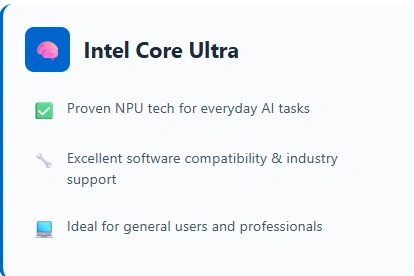
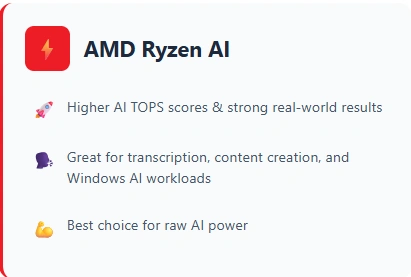
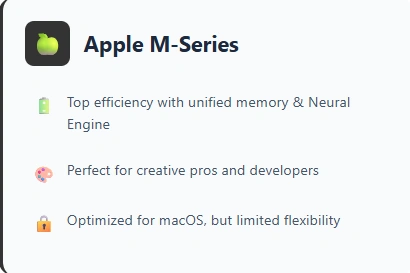
One chip maker will not be better than the others in the future of personal computers. Instead, we are moving towards hybrid synergy, which means systems that use more than one type of processing power in smart ways. When to use the CPU for general tasks, when to turn on the NPU for constant, low-power AI work, and when to turn on the GPU for heavy computational work will make computers the smartest and most powerful.
The next generation of computers will be based on this smart organisation of resources. You do not have to think about it; your operating system and programmes will send tasks to the best hardware automatically, giving you the best balance of speed and efficiency.
When you shop for a new computer, give some thought to the AI work you plan to do on it. Are you a programmer who needs a lot of power to train models? A content creator who cares about speed and battery life for editing whilst travelling? Or just a regular person who wants a quick, smart system that can handle modern AI features without any problems?
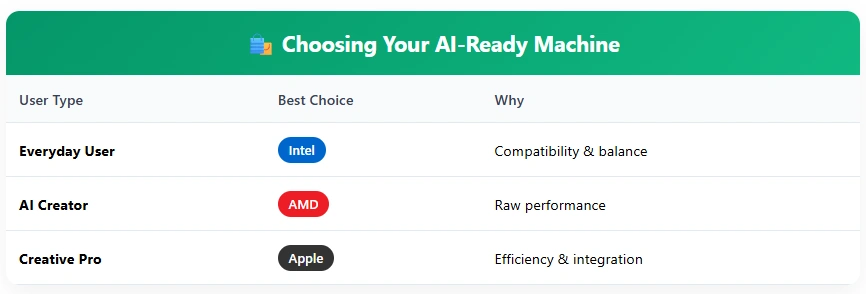
You can choose a machine that is truly ready for the age of AI if you know the pros and cons of each platform. For example, Intel’s platform is more compatible with a wide range of devices, AMD’s platform is better at AI performance, and Apple’s platform is more efficient.
Find out how AI-optimised mini PCs can protect your workflow for the future and help you get the most out of on-device AI. The tools are here, the tech is ready, and you can make your choice.





